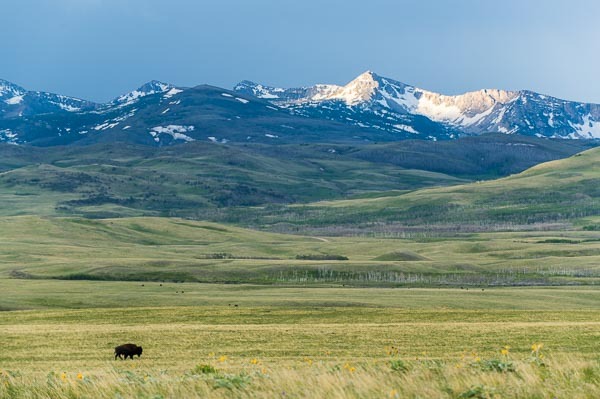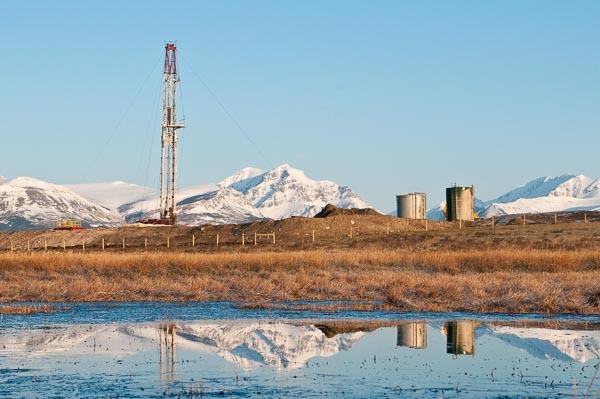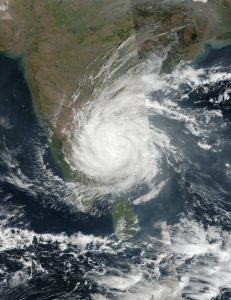Outside Cannon Ball, North Dakota, there is a standoff between law enforcement officers and Native Americans that are backed by thousands of environmental activists. This has drawn the world’s attention to how fossil fuel extractors can ride roughshod over the land rights of indigenous peoples.
Protestors, who call themselves “water protectors”, want to halt the construction of a 1,900 kilometre pipeline that will link Bakken, one of the largest shale oilfields in the US, to distant refineries in Illinois. Tribal chairman David Archambault fears that crude oil leakage from this Dakota Access Pipeline could taint Lake Oahe, the main water source for his Standing Rock Sioux Reservation and some 18 million Americans downstream.
Preventing the bulldozing of sacred sites and burial grounds nearby is vital for his tribe, which lost its prime agricultural land to the Oahe dam and reservoir in the 1950s despite a treaty signed back in 1851. Two years of opposition to the fast-tracked mega-pipeline began in the courts with lawsuits and appeals, but has morphed into a showdown between armed police and Native Americans supported by eco-activists and celebrities.
Allies from 300 indigenous tribes and a throng of supporters keep gathering in North Dakota, in spite of violent clashes with authorities and weather that is increasingly bitter cold. Police used water cannons, rubber bullets, attack dogs and tear gas grenades against crowds that include children and tribal elders. Ultimately the Army Corps of Engineers announced it would deny a permit to tunnel beneath the Missouri River until an environmental impact report was completed and alternative routes explored.
The Texas-based company Energy Transfer Partners is determined to complete the US$3.7 billion (25.4 billion yuan) pipeline and has rejected outgoing US President Barack Obama’s suggestion to reroute the project, as it was around the city of Bismarck to avoid ancestral lands. President-elect Donald Trump reportedly counts the company’s chief executive, Kelcy Warren, among his most generous political donors, so there is a renewed sense of urgency to end the dispute before Trump’s administration begins on January 21. Meanwhile, Energy Transfer Partners is suing for federal reimbursement of the cost of construction delays plus legal fees.
“We ask that you offer a prayer for sensibility and common sense on behalf of all the two legged, as this is not just a Lakota (or Dakota) issue, this is a human issue,” Archambault wrote in the Native Sun News. “This land that is being disturbed was once ours. Our Indian Nations lived and governed our people all over this territory. This land across the Cannon Ball River that is now threatened was forcibly taken from us and there was nothing that we could do about it then and now. Nonetheless, we still believe that we are the keepers of this beautiful land.”

Buffalo on the Badger-Two Medicine reservation in front on the mountain area where the controversial drilling lease was planned. (Image by Tony Bynum)
Oil subsidies
Despite the pledge of the Obama Administration to phase out fossil fuel subsides, oil and gas companies continue to collect billions of dollars per year in the form of government tax incentives and tax breaks. Reforms have been repeatedly blocked by the Republican majority in Congress and oil producers have come to rely on federal support, funded by taxpayers, even as the profitability of oil companies falls globally.
The US government supports the oil and gas sector to the order of US$4 billion every year according to G20 assessments. Others have put the estimate higher, at around US$17 billion. However, the American Petroleum Institute, the lobbying arm of the oil and gas industry, argues that its industries are not uniquely subsidised, in fact many of the tax provisions labelled as “subsidies for oil and gas” also apply to other industries.
“At a time when scientists tell us we need to reduce carbon pollution to prevent catastrophic climate change, it is absurd to provide massive taxpayer subsidies that pad fossil-fuel companies’ already enormous profits,” points out Vermont Senator Bernie Sanders, who last year proposed an End Polluter Welfare Act, which would cut US$135 billion of US subsidies for fossil fuel companies over ten years.
Without the estimated US$665 million in tax breaks it received last year, it is doubtful that the Dakota Access Pipeline would be shovel-ready. Instead, transport companies could have retrofitted and upgraded existing pipelines in order to move the Bakken crude across state lines to refineries. But their cash outlay would have been considerably higher.
Many Native American tribes are understandably cynical about their chances of real cooperation with energy companies. For decades, Sioux tribes have been trying to get compensation for the loss of towns inundated for hydroelectric power. The eventual price of treating a range of medical issues related to pollution or emissions-linked climate change is difficult to figure even if no accidents occur.
Loss of revenue from tourists who hike, fish, and camp near the scenic Lake Oahe will hit North Dakota hard once construction crews tunnel under the Missouri River and foul its pristine water. Hundreds of native bald eagles have already been disturbed by the people and machines assembling at Standing Rock. But loss of dignity is also a reality. Native Americans who gather in solidarity to express their concerns complain that law officials treat them like insurrectionists instead of like citizens with constitutionally guaranteed rights.
Justice for who?
Failure to consult local tribes on pipelines or to secure their permission to build them has long provoked ire against energy conglomerates. Resistance against the Keystone XL pipeline and the Northern Gateway pipeline in Canada is based on environmental justice concerns and qualms about long-term carbon emissions and pollution risks. What’s more, when Native Americans attempt to assert their legal rights and protect traditional sacred spaces that happen to be located near fossil fuel resources, they find themselves up against big money and continual delays.
For instance, the Blackfeet Nation in Montana tried to block construction for thirty years before federal agencies cancelled all but two of the drilling leases for natural gas and oil in their pristine Badger-Two Medicine area. (Seventeen leases were issued with inadequate environmental impact reports during the Reagan era. Drilling has not commenced.)
Bordering their reservation and Glacier National Park, the rugged terrain is the setting for the tribe’s creation myth. During the Blackfeet’s vision quest, specific rocks, peaks and springs are considered portals to the spiritual world. Medicinal herbs grow wild in what is also a critical migration corridor for grizzly bear and elk.
US interior secretary Sally Jewell, who announced the cancellation in mid-November, recognises that the area is too wild to drill. “It should not have been leased to begin with,” she said. “This sets the right tone for how business should be done in the future.” The Blackfeet chief now plans to bring wild bison back to the sacred lands.
Also read: Lake Baikal pipeline threatens critical ecosystem
Rich lands
The US Department of the Interior estimates at least 15 million acres of potential energy and mineral resources lie untapped on Native American-owned lands. Nearly 20% of known oil and gas reserves are located on reservations, along with 30% of the nation’s coal reserves west of the Mississippi, and 50% of potential uranium reserves. Significant sources of oil shale, copper, and rare earth minerals have been discovered, too. Some tribal lands also hold considerable potential for solar and wind power.
Petroleum and mining companies are eager to start exploiting these tribal resources. Last April, the US Senate amended energy policy in order to remove obstacles to exploration. This was purportedly done to create economic opportunities for impoverished tribes, some saddled with unemployment rates of 85%.
The policy to increase American energy independence already has major repercussions in the western United States, where technological advances such as directional drilling and fracking have opened up huge new areas for exploitation. Government subsidies for energy companies are generous: mainly through tax breaks or loan guarantees, some US$20.5 billion (141.3 billion yuan) is paid to support oil, gas and coal production every year.

An oil rig brought to the reservation by the Blackfeet for the purpose of drilling for oil. Although the tribe is arguing against drilling in the Badger -Two Medicine area, they have actively invited oil drilling elsewhere on the reservation. (Image by Tony Bynum)
Land rights, land wrongs
Land rights are a sticking point. On most Native American reservations, property ownership is a jigsaw of private lots and trust lands. Under trust tenure, the government maintains the title to an individual owner’s property as well as to tribal lands and oversees their use. Technically, contracts can be negotiated directly between a tribal council and the oil industry, but the Bureau of Indian Affairs is supposed to ensure that any lease meets “the best interest” of Native Americans. However, federal law also guarantees traditional tribal hunting, trapping, and fishing rights. It protects burial grounds, sacred sites and access to medicinal herbs.
Priorities have changed since the 19th century, when many of America’s indigenous people were either killed by soldiers or displaced from their homelands by immigrant settlers seeking farmland. Tribes were pushed onto reservations located far from fertile fields and population centres. Geographic isolation and deprivation ensued. Citing eminent domain, the government can tweak the treaty terms and take back land deemed indispensable for public use. Hydroelectric dams came first, followed by gas and oil wells, then pipelines. Power to the people comes at a hefty price to the land’s original inhabitants, who make up less than 2% of the US population.
“Fossil fuel companies are determined to dig up every lump of coal and drill every ounce of oil and gas they can get their hands on – no matter the damage they cause to treasured public lands,” said Friends of the Earth, an environmental campaign group. “And as long as they are allowed to keep extracting fossil fuels, the disastrous impacts of climate change will only worsen.”
Fossil fuel exploration in the US doesn’t always pit corporations against Native peoples. In fact, some Navajo and Crow tribes have extracted and processed their own coal for years, which is used to power state grids. For more than 500 years, the Seneca tribe has harvested oil by skimming off natural seepage, and viewed the black ooze as a sacred medicine. Its historic use as a tonic, purge, salve or mosquito repellent is well documented.
But the scale of some proposed fossil fuel projects is staggering. Until a moratorium was called, plans for the mammoth Gateway Pacific Terminal and deep water port at Cherry Point, Washington, included a 900-metre dock where up to 487 tankers would load up with coal from arriving trains for shipment to China. The potential environmental damage alarmed the Lummi people, a tribe of salmon fishers that once controlled all of Puget Sound. To rally Native Americans from other tribes to protect their own ancestral lands from fossil fuel extractors and their toxins, the Lummi hauled a totem pole from the Pacific coast halfway across America four years in a row.
New peril
Pipeline companies argue that moving flammable fuels by rail is fraught with perils, pointing to two dozen derailments or explosions in the past three years alone. But oil pipelines are not hazard-proof either. Small pipeline leaks contaminate the land slowly and detection sensors are often inadequate. Large ruptures can be utterly catastrophic. When this happens, usually as a result of mechanical failure or corrosion, cleanup is a challenge. Crude oil from tar sands is classified as “heavy sour” and must first be thinned with volatile and carcinogenic chemicals before it can flow through pipelines. Such dense oil will not float, as in an ordinary oil spill. Instead, the diluted bitumen (dilbit) sinks to the bottom where it mixes with river sediments and is very difficult to retrieve.
When operators of the Enbridge Pipeline disregarded their system alarms in 2010, crude oil spurted out of a hole for 17 hours into a tributary of the Kalamazoo River in Michigan. Damage control took four years, yet some oil still remains unrecoverable. New regulations obviously are overdue. The dilbit that will flow through the disputed pipelines is currently exempt from an excise tax designed to fund oil spill mitigation. When the law was passed 36 years ago, thick bitumen from the tar sands was not yet considered to be crude oil.
According to Dallas Goldtooth, a prominent activist from the Indigenous Environmental Network, “The best part of the work we do is that it’s not what we’re fighting against but what we’re fighting for. We advocate for localised, small-scale renewable energy production,” he says.
These photos have been republished here with permission from Terray Sylvester and Tony Bynum respectively. They are not licensed under Creative Commons. Please contact www.terraysylvester.








